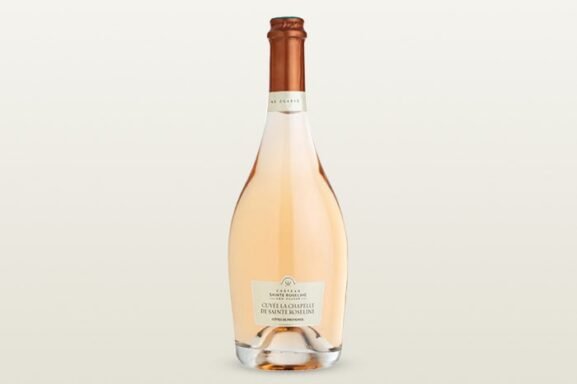Craft Beer Decides Adjunct Lagers Are Cool, Actually
In 2009, a video called “I am a craft brewer” was released in which plethora of well-known brewers decried the encroachment of larger breweries on smaller turfs, sang the praises of quality products and bold flavors, and, at one point, derided the use of adjunct ingredients like corn and rice in macro-brewed beers like Budweiser.
Craft brewers like Sean Lilly Wilson of Fullsteam, Adam Avery of Avery Brewing, Vinnie Cilurzo of Russian River, and others all recited the same lines in the four-minute-long supercut. The tone is somber, with some furrowed brows.
“A little over 100 years ago there were 3,000 breweries in the United States,” the brewers say. “Around that same time, mega corporations decided to put corn in their beer. They decided to put rice in their beer. I don’t put corn in my beer. I don’t put rice in my beer. Everything I put in my beer I choose to put in because it enhances the flavor. I’m not afraid of making my beer more interesting, rather than less.”
Nearly 13 years have passed since the video’s release. Does the message hold up?
“I have thought about that video and those comments,” says Shaun O’Sullivan, cofounder of 21st Amendment Brewery. He was also featured in the video. “We were all so precious back then.”
In 2015, 21st Amendment released El Sully, a Mexican lager brewed with flaked corn. It remains one of the brewery’s more popular offerings.
“We realize that those ingredients are quite nice and play well in beer styles,” says O’Sullivan. “Brewers may disagree with the business and marketing practices of large beer, which is where the ‘I don’t put rice or corn statement’ was pointed, but at the end of the day, ingredients are ingredients.”
In the late 1990s and early aughts, as the craft beer segment emerged and took hold in America, corn and rice were looked down upon by small brewers who favored more “traditional” grains like two-row barley in their lagers and ales. That was laughable to some brewers, who pointed out that the earliest American brewers used both corn and rice in their beers because grains like these were easy to come by.”
Throughout the 20th and 21st centuries, large brands like Coors and Bud Light made no secret about their use of so-called adjuncts like corn and rice. Based on popularity and sales, general beer consumers never seemed to mind those ingredients in their frosty pints.

In 2013, in response to the critics, Chris Lohring of Notch Brewing in Massachusetts released a corn lager called The Mule. “I wanted to show that corn as an ingredient is not bland, it’s a recipe or a goal that makes it bland,” he said. “The corn or rice is not the culprit, it’s the structure of the beer.”
He expected customer pushback when the beer was released, he says, but was met exclusively with excitement from drinkers.
There’s a larger shift now, as smaller producers are creating rice lagers or corn ales that not only bring sweetness and a lightness to the beers, but also familiar flavors, broadening out a customer base. Part of this has to do with a rise of small maltsters who are not only growing barley, but other specialty corn. Much of that is going to distilleries, but some finds its way into brew kettles.
When Maui Brewing Company released a Japanese rice lager, head brewer James Newman commented, “Don’t work too hard, and drink light.”
“We were all so precious back then.” —Shaun O’Sullivan, 21st Amendment Brewery
It’s hard to imagine those words being spoken even five years ago. But as craft beer evolves, looks to appeal to new customers and becomes more comfortable in the technical skill required to make crisp, clean beers, adjunct lagers are becoming the new darlings at the craft beer bar.
Small breweries like KCBC in New York, Bow & Arrow in New Mexico, Ecliptic in Oregon, and countless others have released corn or rice lagers, often to great acclaim.
“Our pilsner Denim Tux uses blue corn and for us it ties back into tradition and allows us to tie into our mission of using local ingredients,” says Shayla Shepard, founder of Bow & Arrow Brewing. She notes that the brewery uses a local mill to grind the corn to meet brewing specifications and pays a premium for the ingredient. “That means a lot to us, buying local and supporting enterprise, jobs, and being an economic resource for people.”

At small taprooms across the country, styles like American light lager and cream ales are increasingly easy to find, and there has been a noticeable uptick in Japanese rice lagers. That style, already popular with Japanese brewers like Sapporo and Asahi, is crisp, refreshing, and dry thanks to copious amounts of rice used in the grain bill. Some U.S. brewers are adding specialty ingredients—adjuncts, if you will—to their recipes, like herbs or spices. Others generously hop some batches.
Sapporo, it should be noted, recently purchased Stone Brewing, the company responsible for financing the “I am a craft brewer” video.
“We’ve had a lot of interest in brewing a rice lager,” says John Harris of Ecliptic Brewing, whose line includes one with jasmine.
Lohring notes that using corn and rice is a lot harder than grains like barley, with the potential for stuck equipment and longer-than-normal brew days. Using these ingredients is not for the faint of heart, he says.
Still, it seems more and more small brewers are willing to try.
“I feel like we’ve all grown up in some ways and as lagers become popular, we as brewers are utilizing ingredients to make those styles and creating new ones such as Cold IPA which in some ways is an American lager version of an IPA,” says O’Sullivan. “We’ve taken a page from big beer and are beating them at their own game. At GABF [Great American Beer Festival], in the big beer lager categories, you are seeing more and more craft breweries win medals that were once dominated by big breweries. We’ve embraced it.”



